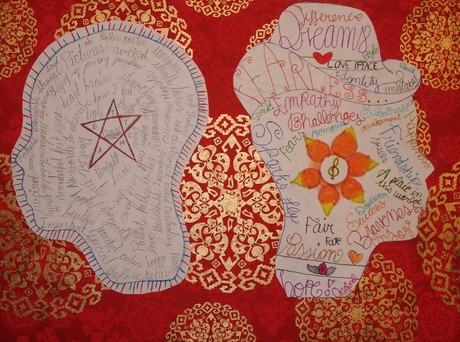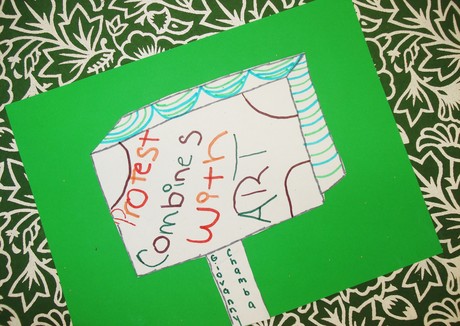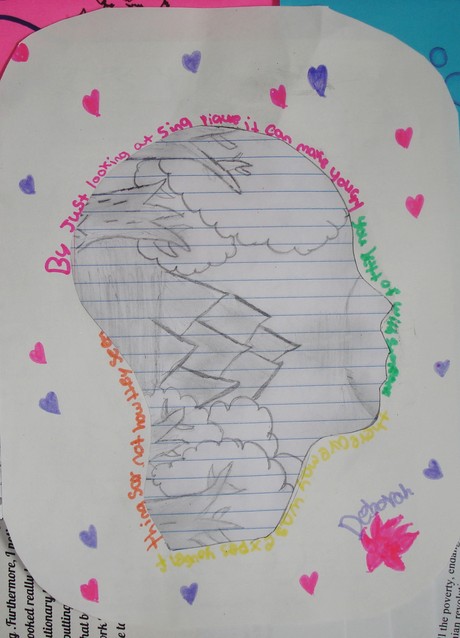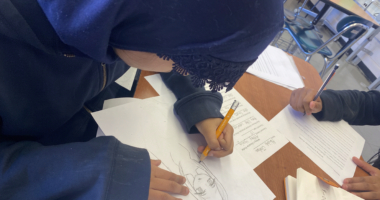
Students at BEA, lead by their Teaching Artists Pamella Allen and Nancy Volante, used their written and illustrated observations from a visual inquiry on a series of videos created by poet Aja Monet and Visual “street” artists Icy & Sot. They used these to collect source material to use in the creation of a personal narrative prose piece, focusing on the themes of freedom, community & revolution to support curriculum. In addition to the prose piece, students created a collaborative poem on these themes using simile and metaphor as well as works on paper utilizing symbolism to create a visual poem.


Seraphim Brown: Hope & Pain

“I noticed in the video Hope & Pain that there was a man putting paintings the wall. The people in many of the artworks had facial expressions that expressed joy. They looked joyful and happy. However some of them seemed dull. They looked upset, hopeless, and angry. The children in the images symbolized hope. The artwork was so detailed you can easily read their emotions and what they meant. The analysis that I made was that the images represented their reality. People were taking down the images because they were careless. They probably thought they were pointless. Maybe they didn’t want the rest of the world to unfold what was really happening in the around them. They probably didn’t want them to face reality. I wonder why they really took down those images. I wonder if the people in the images were people who passed. I wonder if the people in the images were people who lost their homes or lost all hope of happiness. I wonder why these images were shown. Maybe the world needs people who care about helping others like the people in the artwork. The setting in this video is based in Iran, so is Persepolis. The video also connects to Persepolis because they have a connection of distress. Everyone is nervous about what is bound to happen, such as losing his or her home and losing family members. The orphan children in Persepolis symbolize the scared children in the artwork; they probably lost their families or someone close to them. The graffiti and artwork are similar to the ones in my neighborhood because they express the creators feeling or a portrait of someone that passed they would write the name and date of their loved one. There would be candles to honor/mourn the death of those who passed.”


The Teaching Artists are proud of the students’ engagement and progress in their individual and collaborative work as well as their ability to identify the connections in the themes found in Persepolis (the book the students are reading in this quarter), their CWP work, and their personal lives and communities.





